Rural artisans exhibit their skills
Exhibition displaying works of people from rural areas in Sindh and Balochistan was held

Rural artisans exhibit their skills
While much attention is being directed towards immediate relief of flood survivors, the exhibition, Shantul, co-hosted by two NGOs, is aiming for more long-term goals.
The Organisation of People’s Development (OPD) from Sindh and Balochistan Education and Economic Development Society (BEEDS) from Balchistan organised the exhibition at a privately volunteered venue in Phase I, DHA. The exhibition included handmade objects such as handbags, dresses, bangles, shoes and leather goods.
Most of the rural artisans whose work was being displayed at the exhibition have been affected by the flood. The NGOs hope to earn a 20 per cent profit on the objects being sold, 10 per cent of which has already been paid to the artisans while the rest is to be used for helping other flood survivors earn their livelihood in similar manner.
Most of these goods were created by groups called clusters in rural areas of Sindh and Balochistan, said Saeed Ahmed, Executive Committee Member of the OPD. “These people have been displaced by the floods and have no means of income,” he explained.
His organisation aims to use the skills that these people already possess and turn them into practical means of earning money. The OPD has been helping women use their skills to generate incomes for a year and a half. The women are given materials and designs and then paid according to each item they make.
“These people, especially their women, can weave and stitch so well they can easily support themselves with this skill,” said Ahmed, “There is an artisan in every home,” he added.
Shantul, which means dove in Balochi, is the name chosen for the collection because it shows the struggle of poor people in rural areas, said Ahmed.
The basic aim of the NGO is to first promote these goods in Pakistan. Their work helps the workers earn a decent living while at the same time they are preserving art, culture and tradition.
Eventually, they want to export these goods and items abroad so that these people get international recognition and not just aid, he said. “This will also promote inter cultural and inter religious harmony,” he added. Ahmed said that the two NGOs want to use the funds earned by the exhibition and take their project to flood survivors. They plan to identify people in relief camps across the province and then provide them the material and designs so that the flood survivors are able to stand on their feet and support their families.
“This way the women can help their men, who will not be able to resume their original jobs and businesses for a while,” explained Ahmed.
Zulekha Raisani, the co-chairperson of BEEDS, said that in Balochistan, 80 per cent of income is generated by sale of handmade goods.
This exhibition has special pieces made by the famous kala battu (zari) work, zurtoo work, kapto maar and kilim works, she listed. Each piece has been purposefully modernised so that people in the cities can like them and use them. She displayed traditional designs that have been altered to suit modern tastes, laying out an Afghani handmade woman’s shirt that had been turned into a bell-sleeved chic item on a silken floral print.
“Our pieces are also extremely famous among the celebrities,” she said proudly.
The work done on kameez shalwar (pashk) dresses can take almost half a year to complete, she said. It can cost anywhere from Rs4,000 to 15,000.
Mamman a visitor at the exhibition, commended the works for their uniqueness. “They’re also very affordable,” she said.
Her words were echoed by another buyer, Rafia, who felt that given the effort it takes to complete one piece by hand, the price was extremely affordable. “You wouldn’t mind paying a little extra if the work is so unique and has such a cause behind it,” she said, adding that each piece was a testament to the designers’ skill. For Rafia, it was the kilim rugs and the bright colours of the embroidered dresses that stole the show.
Ahmed said that the response has been tepid so far because too many people did not know about the exhibition but they have a very good variety and are hoping to get a better response once people learn about the effort.The exhibition will also be held on Monday, September 6.
Published in The Express Tribune, September 6th, 2010.

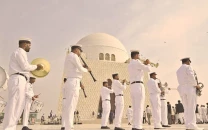
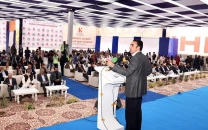
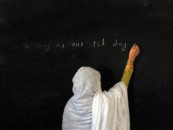


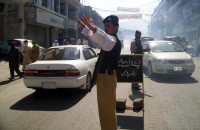




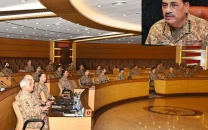





COMMENTS
Comments are moderated and generally will be posted if they are on-topic and not abusive.
For more information, please see our Comments FAQ